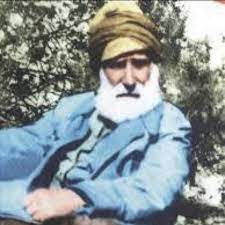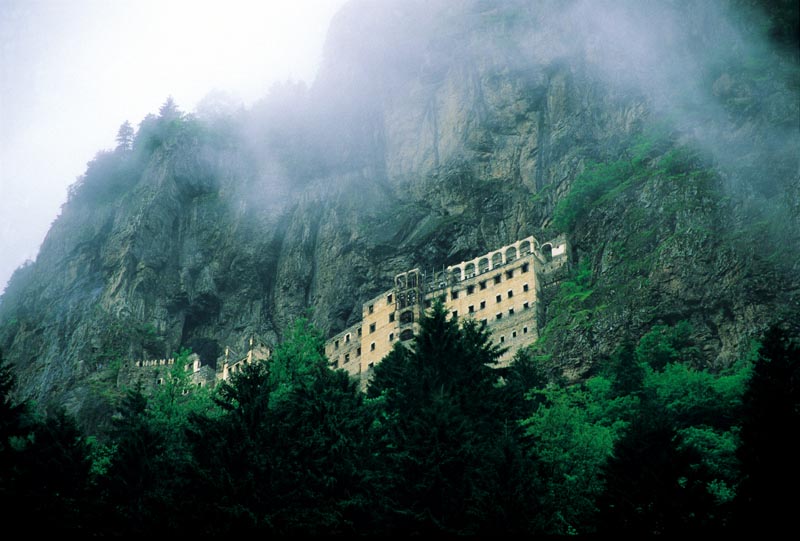Eastern Black Sea Houses
Describing the lush greens of the Eastern Black Sea region to those who haven’t seen them isn’t easy… It’s as if nature has used a different shade of paint in every valley, on every ridge.
Eastern Black Sea Houses by Happy JumperAs your eyes are drawn in by the colorful palette of the steep slopes, you suddenly notice in the distance the houses that follow you with their eyes from between the trees. Houses of stone and timber, the homes of the irrepressible and energetic Black Sea people, shaped by their culture, raised and built by their hands…
CLOSED ‘CULTURAL BASINS’
Eastern Black Sea villages nestle against the slopes of the valleys that run down to the sea from the mountain ranges parallel to the coast. Finding a patch of level ground in these villages is extremely difficult, and people are forced to climb up or downhill for all their activities. If the particular spot where you live has no view of the sea, then you won’t find even a single horizontal line among the trees, hills and mountains on which to rest your gaze. The road that follows a rushing stream along the valley floor is shared by all the villages in that valley. Since such roads only meet at the shore, the people living in one valley have virtually no relations with the inhabitants of even the next valley. In other words, each valley is virtually a closed ‘cultural basin’.
The houses of the Eastern Black Sea are so scattered within the boundaries of their village that there is usually not even a tiny central square. Why then are houses built so far apart on the Black Sea? The reason naturally is not that people want to avoid each other. The sole explanation is the rough terrain. Consequently, any spots suitable for building are snapped up with no concern for proximity to a neighbor. This insular and solitary way of life is universally acknowledged to be responsible for the temperamental, contentious and ruggedly independent nature of the Black Sea people, which has endowed them with a capacity for solving their own problems without seeking help from others. With building materials gathered and techniques gleaned from the environment, these people have succeeded in constructing houses that are perfectly suited to the region’s natural conditions.
STONE AND TIMBER
In this region, where erosion has thinned the topsoil, houses are built wherever a patch of cultivable land can be found. Another factor that influences the location of houses is water, sources of which tend to be scattered all over the village.The building traditions and house-plans of the Eastern Black Sea take a variety of forms within the region, exhibiting yet other variations along the coast. In the far east, for example, in Savsat township of Artvin province, the houses are made completely of wood. In Yusufeli on the other hand the Side and back walls are of stone.In the township’s coastal sector we begin to find walls built by the ‘goz dolma’ technique. This technique, which is widespread along the coast of Rize, gives way to timber again as one travels inland and upward. The minute you enter Trabzon, the ‘goz dolma’ technique is replaced by the ‘muskali dolma’ style, consisting of amulet-like triangles that appear to be made of tiny cubes. (Both of the so-called ‘dolma’ styles are based on a building technique of ‘filling’ in timber frames with stones or other materials.) In the sparsely forested Arakli and Duzkoy valleys of Trabzon province, there are houses, albeit few in number, whose facades consist entirely of stone walls. The timber exteriors encountered on the coast from the Georgian border to near Trabzon do not appear again all the way to Ordu. Meanwhile the interior dividing walls of houses throughout the region are made exclusively of wooden materials. All along the coast the roofs are made of tiles, whereas in the higher villages they are covered with thin wood shingles known as ‘hartama’ or ‘bedevra’.
FUNCTIONAL AND AESTHETIC
And now for the layout of the Eastern Black Sea house. Its back to the hillside, its front overlooking the valley, the Black Sea house’s underground level is a stable for the dairy animals. Above this is the owner’s living space. Known for their innate resourcefulness, natives of the Eastern Black Sea build their bedrooms over the stable to take advantage of the heat radiated by the animals on cold winter nights. On the ground floor, in the part of the house that rests against the hillside, they make use of an earthen floor. This section, called the ‘ashane’ (literally ‘soup kitchen’), is where all the daily activities are carried out. An open fire burns in the center of this room, where food is cooked and consumed and guests are entertained. There are no windows in this area, for protection against any possible danger that might come from outside. It is therefore a dark space, the only light being that coming in through the door. The bedrooms are in the other half of the house which overlooks the valley.While bedrooms in villages west of Trabzon open onto the kitchen, in the eastern regions a corridor separates the two areas in an arrangement that affords more privacy. Meanwhile, in the coastal villages of Artvin and Rize, this corridor becomes a large living room called a ‘hayat’, a light and spacious area affording a panoramic view of the valley and a place to pass the time on boring winter days when one is cooped up inside. This section is heated by a stove, from whose warmth the bedrooms benefit as well. All daytime and nocturnal activities are carried out on the ground floor of Eastern Black Sea houses. Besides the usual household chores, people are constantly busy raising vegetables, tea, hazelnuts and tobacco, procuring firewood and feeding the animals. An upper floor would naturally increase the burden of, and the fatigue caused by, these tasks. The tradition of having an upstairs can be seen only in the villages of Ardesen and Camlihemsin in Rize province. Here the bedrooms are on the second floor, which results in a substantial increase in living space.
A DIFFERENT BEAUTY: THE MANSIONS OF CAMLIHEMSIN
It is impossible to speak of big houses without mentioning the veritable mansions of Camlihemsin. These large, solid and imposing structures, built in the township’s central villages in the late 19th and early 20th century, dazzle the eye. But don’t be fooled by their ostentatious exteriors. They are not the homes of big landowners or local governors. The owners of these homes are ordinary people who have turned the money they earned working in Moscow, Rostov and St Petersburg into homes. The accessories such as door handles, window grilles and colored glass used in the Camlihemsin mansions, which number some 30 to 40 in all, were all brought from Russia. Similar mansions, albeit few in number, can also be seen in the coastal villages of Trabzon’s Surmene and Of townships. The most famous of them is the mansion of ‘Memis aga’, 4 km east of Surmene on the main road. And it’s owner really is an ‘aga’ (local landowner). Unfortunately these lovely relics of the living culture of a period are facing extinction today. The process of destruction began the minute the houses were left unattended when their owners abandoned the towns and villages for economic reasons.
This year the world’s architects are meeting in Istanbul for the International Asian architecture Conference in June and the UIA 2005 World Congress of Architecture, organized by the Union of International Architects, in July. A photography exhibition featuring the rural architecture of the Eastern Black Sea will also open at Istanbul’s Milli Reasurans Art Gallery in July. If you can’t go to the Black Sea, then at least visit the exhibition. As we said at the beginning, it’s difficult to describe the greenery there, or the red-roofed houses that bedeck the hillsides…
TEXT: MUSTAFA RESAT SÜMERKAN


